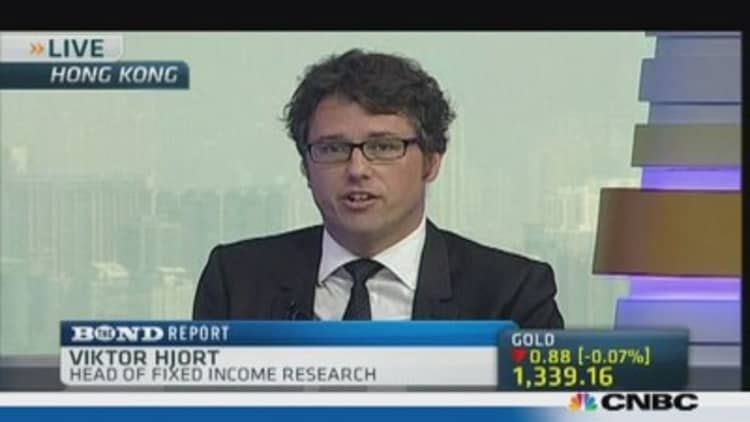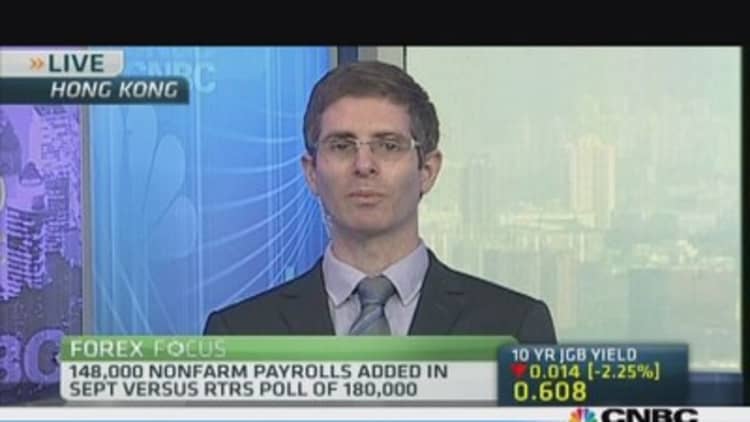Following the weaker-than-expected U.S. unemployment report for September, the Federal Reserve will likely delay tapering its $85 billion-a-month bond-buying program until March, according to Goldman Sachs.
"Although December remains a possibility, this report makes it more likely that the Fed pushes the first reduction in the pace of its asset purchases into 2014," economists at the bank wrote in a note late Tuesday.
(Read more: Thanks, Congress: Data delay means no Fed taper)
"While the uncertainty is considerable, we think that March is the most likely date under our economic forecast, and the assumption that the next set of fiscal deadlines proves less disruptive than the most recent set," they added.

Last month, the world's largest economy added 148,000 jobs, below expectations of 180,000, and down from August's revised 193,000. The jobless rate fell to 7.2 percent, from 7.3 percent.
The report, delayed by the 16-day partial U.S. government shutdown, showed surprisingly low growth in the private sector of just 129,000 jobs and a weakening trend in the past several months. While August jobs were revised to 193,000 from 169,000, the July report was revised down to 89,000 from 104,000.
(Read more: Fed's Evans: Shutdown may delay taper by months)
The labor market plays a key role in the Fed's monetary policy decisions. In December 2012, the central bank said interest rates would remain near zero until unemployment falls to at least 6.5 percent.

On top of tepid job growth, the government shutdown and debt limit brinksmanship have also had a negative impact on the economy.
The shutdown is estimated to have reduced the annualized growth rate of gross domestic product in the fourth quarter by anywhere from 0.2 percentage point, as forecast by JP Morgan, to 0.6 percentage point, as forecast by Standard and Poor's.
Economists at Citi also see March 2014 as the most probable time frame for a reduction in monetary stimulus.
(Read more: Taper talk sets tone for down and out dollar)
"For Fed officials who saw recovery's glass as half empty in September, [Tuesday's] data, along with the questions raised by the fiscal standoff, will likely reinforce the desire to maintain peak accommodation just a little longer than we anticipated," economists at the bank wrote in a note.
—By CNBC's Ansuya Harjani; Follow her on Twitter @Ansuya_H


